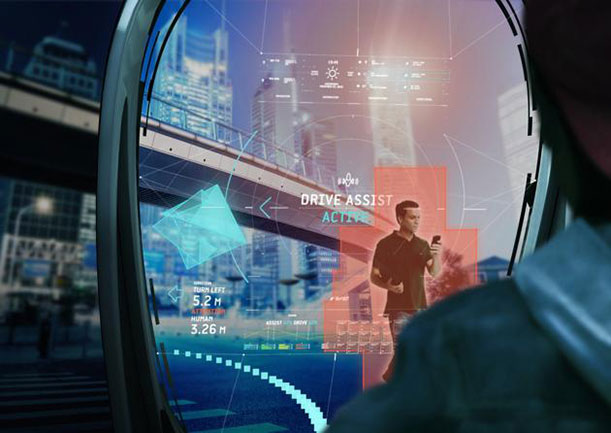Toyota’s New Concept Car Takes the Driver’s Movements and Emotions Into Consideration
Toyota’s FV2 is engineered to make cars “Fun to Drive, Again.” But it might be too far out to ever become a reality
/https://tf-cmsv2-smithsonianmag-media.s3.amazonaws.com/filer/Innovations-Toyota-standing-car.jpg)
There are concept cars and then there are concept cars. Toyota’s new lineup of possibilities for tomorrow, unveiled at the Tokyo Motor Show, shows the broad range, from the conceivable to the almost unimaginable, of one manufacturer’s innovative thinking.
On one end of the spectrum is the Toyota FCV, a hydrogen-fueled “practical concept” that Toyota plans to introduce sometime in 2015. Running on a well-developed clean-energy technology that rivals electric plug-ins, the four-door sedan boasts a driving range of over 300 miles and the ability to fuel up about as quickly and conveniently as gas-powered cars. On the other end is the science fiction-inspired FV2, a Tron-like kaleidoscope of futuristic technologies engineered to, as the company boasts, make cars ”fun to drive, again.” It’s also a car that none of us will be taking for a spin any time soon (if ever).
“This is an imagination piece rather than something that will be seen in production in the next few years,” an unnamed company spokesman told the BBC. “But some of the technologies we’re suggesting could be introduced further down the line—say in five to 10 years’ time.”
This “imaginary” theme is fitting since the Japanese automaker’s aim is to get drivers to momentarily put aside the conventional logic of steering by hand and consider doing so by using the body and its movements as a whole. While the Wall Street Journal has described the FV2 as basically a “four-wheel cross between a tilting three-wheel scooter and a Segway personal transporter,” navigating streets with the dashboard-less vehicle seems more akin to the sport of riding a skateboard in that controlling the vehicle is done through the driver shifting parts of the body to “intuitively move the vehicle forward and back, left and right,” according to the press release.
And like almost all futuristic models, the FV2′s computer systems are designed to be far more brainier than anything anyone’s ever experienced, so much so that it can darn near do our thinking for us. Hence it comes equipped with what Toyota calls an “intelligent transport system” that communicates with other vehicles and reads the road environment to generate optimal safety information, like if there’s a vehicle hidden in a blind spot at an intersection. The car also showcases technologies from the “Toyota Heart Project,” a collaboration between Toyota and other research institutions that led to the creation of twin robots named Kirobo and Mirata, both of which possess voice and facial recognition capabilities. The car adapts this technology to get a better read on the driver’s mood and to analyze each person’s driving history and other behavioral tendencies in order to offer up advice on potential destinations and ways to improve as a driver. The Verge reports that the same augmented reality system that conveys traffic information in the car’s windshield also changes color, almost like a mood ring, depending on the driver’s emotional status.
Of course, there’s a valid argument for “Who the heck needs all this?” Driving with two hands, for one, has worked out fine so far, and the categorical separation between skateboards, bicycles and cars has enabled city infrastructures comprised of dedicated bike lanes, sidewalks and highways to co-exist as a functional, if not perfect, transportation ecosystem. Shouldn’t Segways be enjoyed in less motorized areas and away from where the serious—and sometimes hazardous—business of getting somewhere on time takes place?
“I think in practical terms the FV2 won’t see the light of day,” Paul Newton of consultants IHS Automotive told the BBC. “If you are standing up and leaning to move it, my first thought would be, what if you hit something? The likelihood of it being licensed in today’s safety-conscious environment is zero.”
But keep in mind that as touchscreen devices such smartphones and tablets become constant, almost attached-to-the-hip forms of entertainment, people are continually wanting more and more out of their personal technologies. It isn’t enough that phones can make calls anymore, so it’s also not entirely unreasonable to believe that cars will someday be expected to also cater to our ever-expanding emotional needs. With the FV2, car companies like Toyota have at least shown that they’re hard at work on a contingency plan, no matter how far down the road that may be.
/https://tf-cmsv2-smithsonianmag-media.s3.amazonaws.com/accounts/headshot/tuan-nguyen.jpg)


/https://tf-cmsv2-smithsonianmag-media.s3.amazonaws.com/accounts/headshot/tuan-nguyen.jpg)